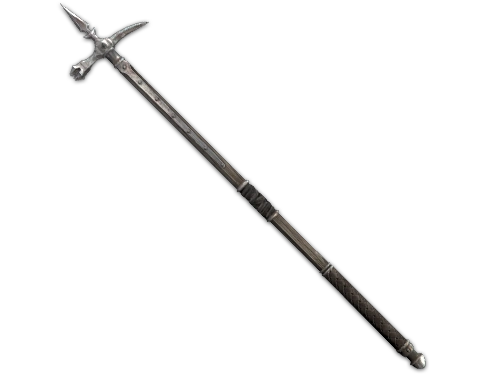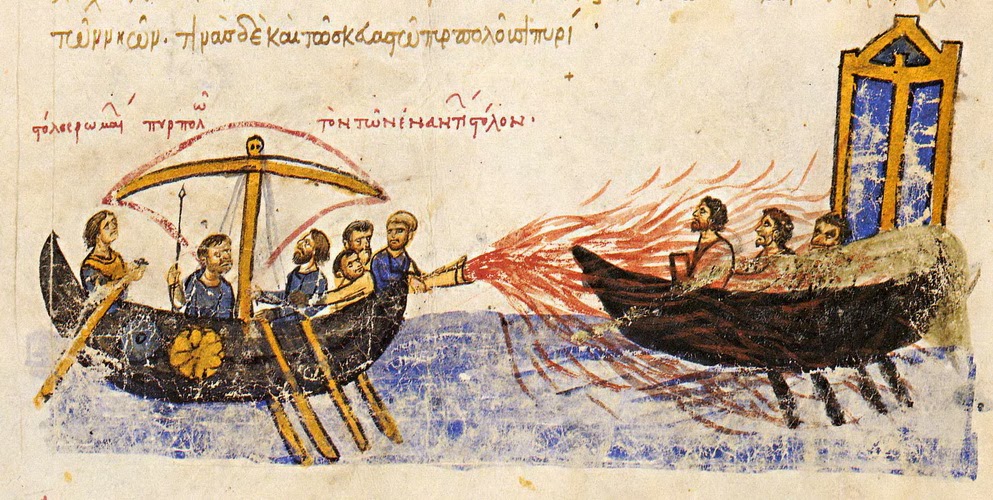"Useless" is an exaggeration. Of course you'd be at a disadvantage, but a sword would still be useful in defending against your opponent's weapon, and give you the ability to trip and/or grapple them which would make any weapon they are carrying equally useless, since at that point it's a wrestling match.Of course a sword is better than nothing, but when you compare sword to mace, warhammer and especially pole arms like poleaxes and polehammers swords are indeed close to useless.
-
If you have been following the news, you should be aware that the people of Lebanon have been under a violent bombardment that has recently escalated. Please consider donating to help them if you can or trying to spread word of the fundraiser.
-
Asheville and Western North Carolina at large are in crisis after Helene, please consider contributing to these local organizations and helping the people whose lives have been destroyed.
The best medieval melee weapon?
- Thread starter fireflame
- Start date
You are using an out of date browser. It may not display this or other websites correctly.
You should upgrade or use an alternative browser.
You should upgrade or use an alternative browser.
Some of yall are being ridiculous about armor.
Acting like that shit was everywhere.
Armor was expensive af and was used for nobility who had special rules in combat that favored them regardless.
Anyway I was always fond of Grosse Messer and depending on if you count it as medieval rapier or colichmarde. Saber on horseback was also pretty dope.
Acting like that shit was everywhere.
Armor was expensive af and was used for nobility who had special rules in combat that favored them regardless.
Anyway I was always fond of Grosse Messer and depending on if you count it as medieval rapier or colichmarde. Saber on horseback was also pretty dope.
I recommend to look up HEMA longsword fighting, you'll quickly come to understand that speed and mobility is the way you're going to not get killed.
I started the last hour watching HEMA long sword fighting on YouTube...and then got sucked into the playlist algorithm that lead me to medieval armored fighting completions. It's such a brutally clumsy way to fight, regardless of weapon choice. To me, it seems like caution and stamina may be more important than weapon choice.
I'm going to go with the spear/halberd because i agree with the user that stated that a superior reach is king.
Of course a sword is better than nothing, but when you compare sword to mace, warhammer and especially pole arms like poleaxes and polehammers swords are indeed close to useless*.
*Against plate armor.
Plate was expensive as fuck though. Only a small amount of people will be equipped with it and even fewer with full plate that protects all the squishy bits.
The weapons are not that heavy. But, like any high stress physical activity, most folks couldn't do more than a few minutes. A bit part of battles is fatiguing the enemy through needless maneuvering, then hittingthen with a surge of fresh troops. The specific weapon varies, depending on the culture.
For my money the English longbow was the supreme weapon. All the melee stuff is so situational.
For my money the English longbow was the supreme weapon. All the melee stuff is so situational.
Then I pick a lance and a horse, superior reach and mobility!I'm going to go with the spear/halberd because i agree with the user that stated that a superior reach is king.
Well in terms of widespread use it would obviously be the longsword, but in actual terms of usefulness and versatility in battle it would be VERY hard to argue against the Poleaxe.
I mean you can argue about it for days for various weapons, but the poleaxe was a powerful and versatile weapon that took very little training to use effectively.
Whereas weapons like the longsword, great-swords, maces, and flails took a substantial amount of training to use effectively in battle.
I mean you can argue about it for days for various weapons, but the poleaxe was a powerful and versatile weapon that took very little training to use effectively.
Whereas weapons like the longsword, great-swords, maces, and flails took a substantial amount of training to use effectively in battle.
As munitions grade armor became more and more mass produced a lot of people were equipped in full plate in the later half of 15th century and onwards.Plate was expensive as fuck though. Only a small amount of people will be equipped with it and even fewer with full plate that protects all the squishy bits.
It was not just knights wearing plate, it was basically most man-at-arms.
Even if you weren't wearing full plate you'd still be wearing comparable armor like a brigandine or coat of plates combined with mail and gambeson, still makes swords really really terrible weapons for that particular threat.
There's a reason swords pretty much stayed entirely sidearms and vanity items. Most soldiers primary weapon were polearms that stood a chance against armored opponents.
Isn't that getting into the Renaissance, though?As munitions grade armor became more and more mass produced a lot of people were equipped in full plate in the later half of 15th century and onwards.
The poleaxe of course. It's a spear+axe+hammer in one package.
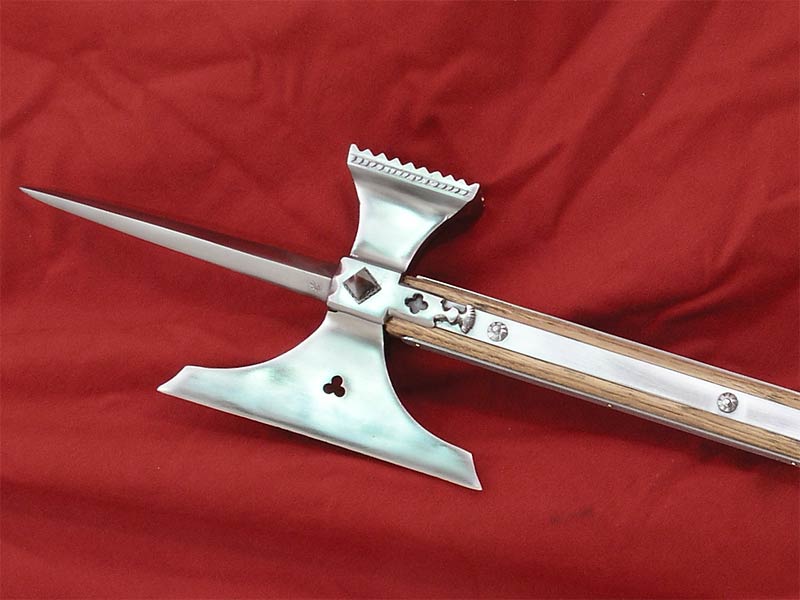
Correct Answer
You could argue that yes, but the point still remains, for all intends and purposes coat of plates, brigandines, mail armor and the like is extremely effective at neutralizing the threat of a sword.
Even the revered Samurai didn't use their swords as primary weapon, they used polearms as well against their opponents wearing mail and plate.
It's worth noting that while plate armor didn't get popular until the late middle ages/early Renaissance, chain mail became increasingly more popular during the high and late middle ages due to the development of new mining and forging techniques making the cost for such armor cheaper. Swords, while generally good against lightly armored troops weren't particularly effective against mail. Was it possible to kill someone in mail using a sword? Definitely, yet using a sword was still not as effective as using some of the other weapons mentioned in this thread.
You could argue that yes, but the point still remains, for all intends and purposes coat of plates, brigandines, mail armor and the like is extremely effective at neutralizing the threat of a sword.
Even the revered Samurai didn't use their swords as primary weapon, they used polearms as well against their opponents wearing mail and plate.
It's worth noting that while plate armor didn't get popular until the late middle ages/early Renaissance, chain mail became increasingly more popular during the high and late middle ages due to the development of new mining and forging techniques making the cost for such armor cheaper. Swords, while generally good against lightly armored troops weren't particularly effective against mail. Was it possible to kill someone in mail using a sword? Definitely, yet using a sword was still not as effective as using some of the other weapons mentioned in this thread.
That's not what anime taught me!

Weaponry has always been a point/counterpoint operation, the flail was in response to mail and plate armors, for example. The spear stuck around because it's literally the easiest weapon to train soldiers to use effectively and firearms gradually reduced the usefulness of armor. Ironically, in the trenches of WWI your shovel or a spiked club was a better weapon to have at hand than a fixed bayonet.
This is true but misleading, at least going by the fact that I'm unable to find any casualty reports that give numbers for people killed by non-bayonet melee weapons. Bayonets are very generally applicable, and while trench clubs and such were better in specific situations it was probably best to just not enter a trench filled with enemies at all (hence why hand grenades became extremely prevalent).
Assuming relatively even ground. The spear was ubiquitous but combined arms was in part forced by variations in terrain. This is easy to establish with a simple thought experiment -- say you have an army of hoplites and you're heading to a battlefield where the main geographical feature is a large dune-like hill. The ideal situation would be to set up along the ridge so you have the high ground but also can keep your phalanx cohesive. So what's the first thing an opposing commander would do? Flank the phalanx. At which point your army will get hacked to pieces from the side, or you can try to rotate your formation 90 degrees on the top of a ridge with gravity pulling your formation apart from the middle. When you can't form up a lethal mass of pointy sticks, things get messy, and while I'm not fully informed on how they were used in massed combat, this is where hooky/choppy weapons like the sword, halberd, axe, and two-handed sword were thought to be deployed.
Iirc the Romans abandoned the phalanx before they even became an empire thanks to its impracticality, so that seems a pretty unfair comparison. What the Swiss did was take their pikemen and divide them into 10x10 squares of one hundred or so men. It was even on all sides, so you could change direction quickly enough to avoid being outflanked. So when they marched these pike formations into enemies there was no real counter until artillery improved.
Halberds and most of the bigger swords like zwiehanders aren't really axes or swords but variations on the pointy stick. At least in regards to how they were used, because you aren't going to be swinging around a sword or axe in this:
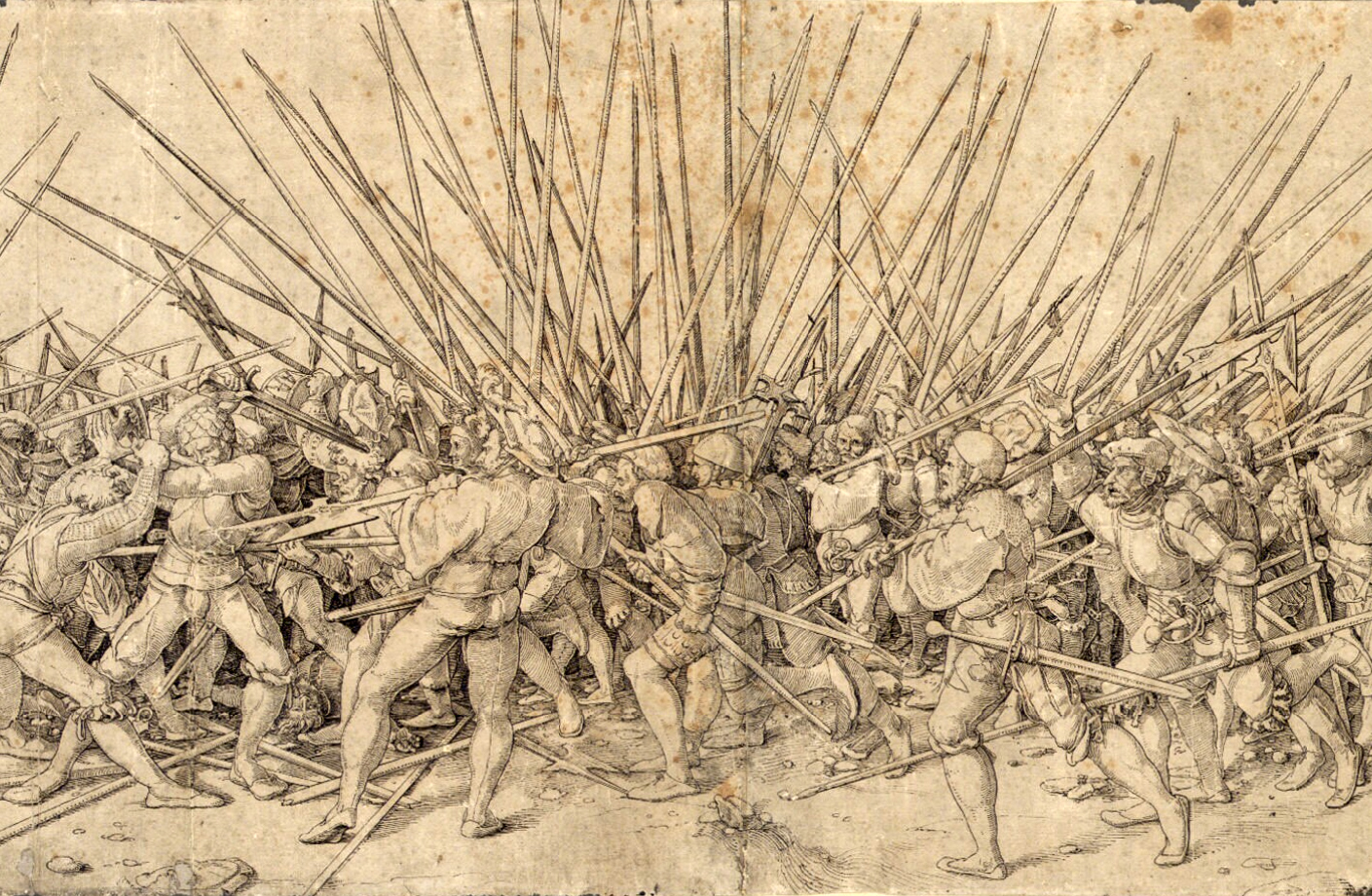
Last edited:
It's funny because in Kingdom Shin has long since ditched a sword as his main weapon in favor of a Glaive lol.
Also that series takes place in warring states China which is way before mideval times lol
This is true but misleading, at least going by the fact that I'm unable to find any casualty reports that give numbers for people killed by non-bayonet melee weapons. Bayonets are very generally applicable, and while trench clubs and such were better in specific situations it was probably best to just not enter a trench filled with enemies at all (hence why hand grenades became extremely prevalent).
Iirc the Romans abandoned the phalanx before they even became an empire thanks to its impracticality, so that seems a pretty unfair comparison. What the Swiss did was take their pikemen and divide them into 10x10 squares of one hundred or so men. It was even on all sides, so you could change direction quickly enough to avoid being outflanked. So when they marched these pike formations into enemies there was no real counter.
Halberds and most of the bigger swords like zwiehanders aren't really axes or swords but variations on the pointy stick. At least in regards to how they were used, because you aren't going to be swinging around a sword or axe in this:

The halberd guys look really sad that they can't reach anything.
It's funny because in Kingdom Shin has long since ditched a sword as his main weapon in favor of a Glaive lol
I just got to the part where he receives the glaive, actually!
i couldn't google anything during my lunchbreak to counter your argument without amassing an army for a square formation. so ill just hide in a dense forest.
The halberd guys look really sad that they can't reach anything.
I especially like the guy with the sword slung over his shoulder, looking back like "...fuck."
As munitions grade armor became more and more mass produced a lot of people were equipped in full plate in the later half of 15th century and onwards.
It was not just knights wearing plate, it was basically most man-at-arms.
But that wouldn't be in the middle ages any longer, but the Renaissance and the early Modern era.
Edgy
On topic, local economic realities and custom were probably more important for the weaponry of "large" forces, of course rarely particularly large by classical or modern standards, than leaders, and there's a lot to be questioned about their control over their forces outside of battle itself, logically planning much of anything.
^I change my answer to the flying guillotine:



The Magna Carta.



The Magna Carta.
I think Polearms are generally the best in formation. I don't think you would want to use one in a one-on-one battle though. One-on-One you want something lighter with shorter reach. Probably either a one-handed sword or a mace depending on your opponents armour.
Pssh. The correct answer here is a flanged mace. Ain't nobody standing up to that bad boy. At best, you'll get away from it with broken bones. More than likely you'll be getting you head turned to mush by one though.
Looks like flat ground to me.
So, like I said. . . things got more interesting when the ground wasn't flat. A lot of medieval strategy was trying to find ways to A) lure your enemy onto flat ground if you had a bunch of conventional arms (pikes, bows, lances) at your disposal, or B) stay the hell away from flat ground if you didn't.
The polehammer and poleaxe are both really good choices since you get range, blunt force, stabbing, and cutting with the poleaxe. The only problem is, do you have the room to swing it? I think this is where a mace would have the advantage. Since a mace is much shorter and can be wielded one-handed, you don't need as big of a swing, but you still get a lot of power out of it. The mace would be far superior is a close quarters fight.
That's what the kick is for.The polehammer and poleaxe are both really good choices since you get range, blunt force, stabbing, and cutting with the poleaxe. The only problem is, do you have the room to swing it? I think this is where a mace would have the advantage. Since a mace is much shorter and can be wielded one-handed, you don't need as big of a swing, but you still get a lot of power out of it. The mace would be far superior is a close quarters fight.
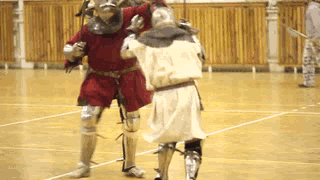
A lot of polearms had a hook and/or weight on the other end which allowed them to be somewhat useful in a close-quarters fight. At that point it becomes less of a reach weapon and more of an overly long and complicated staff. That doesn't make it a great weapon to use a phone booth, but it's better than a regular ol' pike which is completely useless in the event the formation is successfully broken.The polehammer and poleaxe are both really good choices since you get range, blunt force, stabbing, and cutting with the poleaxe. The only problem is, do you have the room to swing it?
On a purely "looks cool" level I'm gonna agree with the flail, and it's cousin morningstar. Though I think I read somewhere once that flails weren't actually used all that much, obviously they're somewhat unwieldy.
Warhammer is also pretty threatening just on a psychological level, dig that.
Great movie.
Warhammer is also pretty threatening just on a psychological level, dig that.
Great movie.
But there's really not. Do you know what a sword does against plate armor? Jack and shit.
This is not entirely accurate. Yes, if you just whack away at the steel like an individual who has no training or an idea of how to properly use a sword, it's useless vs plate.
But.
Half-Swording is a thing for a reason, and is the reason why you saw swords go from a broad tip to a more tapered end, which was great for Thrusts.
Half Swording was used to penetrate the weak joints where plate did not protect a person. Even then, they had mail and a gambeson underneath if they properly armored up, and that helped but would not fully protect given a good sword thrust to a vital area that could penetrate the joints or arm pits, where plate did not protect.
Even then, you could half sword and use the hilt or crossguard or pommel, to do murder strokes, which could be tremendously effective.
That isn't even going into facets of Abrazare and using a Rondel to just bring someone down to the ground in their plate and just driving that monster straight into vulnerable areas.
Swords are more effective than most people give them credit for. If there is any weapon I myself would say I would be outright terrified to go against, it's the rapier.
Quick, lightning fast, clean, and disturbingly frigging silent as hell as it penetrates and leaves the wound.
It's downright damned terrifying. You wouldn't think it would be, but it is.
Last edited:
A Longsword used as half-Swording could break a knight too. Makeshift Hammer with the pommel or guard and a makeshift spear to aim in the Weak parts.
Against lightly armored opponents? The LongSword would cut them like butter.
The weakness of the Poleaxe and similar weapons is the range and slowness of them. if you get a Hit before the other guy is right in front of you, of course you kind of win. If you hit.
Warhammers were good of course but they are slow and heavy weapons and they only work one way (Lift and Bash).
Another fact : Knights were using wrestling to fight in close quarters. Kicks, Punch, throws, push, tripping etc. Anything to make the guy fall on the ground.
Verdict : Firearms.
Against lightly armored opponents? The LongSword would cut them like butter.
The weakness of the Poleaxe and similar weapons is the range and slowness of them. if you get a Hit before the other guy is right in front of you, of course you kind of win. If you hit.
Warhammers were good of course but they are slow and heavy weapons and they only work one way (Lift and Bash).
Another fact : Knights were using wrestling to fight in close quarters. Kicks, Punch, throws, push, tripping etc. Anything to make the guy fall on the ground.
Verdict : Firearms.
The Poleaxe was the best _overall_ melee weapon of late Medieval and early Renaissance.
Watched this video some time ago, found it quite interesting (use subtitles) :
https://youtu.be/ev4lW0wbnX8?t=14m44s
german Longsword vs Katana
https://youtu.be/ev4lW0wbnX8?t=14m44s
german Longsword vs Katana
I find the Lochabar Axe to be kinda underrated - it was mostly used in Scotland and never really used elsewhere


^I change my answer to the flying guillotine:


Love the guy cracking up in the 3rd GIF lmao.

The Magna Carta.
Looks like flat ground to me.
So, like I said. . . things got more interesting when the ground wasn't flat. A lot of medieval strategy was trying to find ways to A) lure your enemy onto flat ground if you had a bunch of conventional arms (pikes, bows, lances) at your disposal, or B) stay the hell away from flat ground if you didn't.
Well yeah, that's why you don't march your pike formations into obvious traps on hills. You're thinking in abstractions; like, a sword is probably better in a 1v1 duel in a spiral staircase, but spears were best in most situations and sufficient in even those they weren't great at.
It doesn't really change the fact that spears were the defining weapon for nearly all of medieval history. Even the Romans, those famous users of the gladius, mostly abandoned them around 4AD in favor of shields and pointy sticks of some sort - I don't know if there's a consensus on precisely why this was, but they presumably did it for a reason.
Just looking at these weapons.........man, medieval combat was brutal as fuck.
I would rather get shot honestly. Especially if its going to be fatal.
I would rather get shot honestly. Especially if its going to be fatal.
The Mace would be me weapon of choice if it came to picking "one" weapon against all facets of middle ages combat.
A mace was simple enough and good enough that it could be used against unarmored and armored enemies, it would crush plate armor so it was a good all around choice that worked against most varieties of armor. Though you'd be at a disadvantage vs say, someone with a spear.
A sword is not going to do much vs someone wearing plate. That is why they had to use half-swording techniques when fighting against someone in plate. This means you hold the sword more like a spear, putting one hand on the blade above the hilt and using it like a spear. The goal would be to slide the sword into a weak point where the plate armor isn't protecting you, like the neck, arm pits, groin, or helmet visor or to use the pommel to strike against the plate and stun them. This technique also made use of trips/disarms as well, basically anything that would make it easier to get your opponent down and slide the blade into a weak point.
In my other hand I would like to have a buckler. The buckler different from most shields in the fact that it was held in your palm with a handle, it wasn't strapped to your arm like larger shields were. On top of this bucklers would be quite varied and customizable. You could have things like serrated edges on the boss of the buckler (which could be used to cut your enemy), a spike (which could damage their weapons or used to hit them with), even a latch which could be useful to trap their weapon and disarm them.
Since they were simply grasped in your hand that meant if your it got held or "pulled" by your opponent you could simply let go of it, whereas a guy with a shield strapped to his arm is stuck to it and could be thrown off balance or pulled to the ground/trapped.
Bucklers are often overlooked when it comes to media (movies, games, etc) and treated as the lowest "class" of a shield, but in truth they were one of the most used and even outlasted the use of the larger types of shields. Hell they even found one in the Jamestown settlement.
When it comes to armor choice, I'd go with plate hands down. There's a reason it was expensive, because it offered so much protection. Arrows/swords? Near useless against plate. The main weakness was crushing/cleaving weapons, like the war pick, mace, or axe.
A mace was simple enough and good enough that it could be used against unarmored and armored enemies, it would crush plate armor so it was a good all around choice that worked against most varieties of armor. Though you'd be at a disadvantage vs say, someone with a spear.
A sword is not going to do much vs someone wearing plate. That is why they had to use half-swording techniques when fighting against someone in plate. This means you hold the sword more like a spear, putting one hand on the blade above the hilt and using it like a spear. The goal would be to slide the sword into a weak point where the plate armor isn't protecting you, like the neck, arm pits, groin, or helmet visor or to use the pommel to strike against the plate and stun them. This technique also made use of trips/disarms as well, basically anything that would make it easier to get your opponent down and slide the blade into a weak point.
In my other hand I would like to have a buckler. The buckler different from most shields in the fact that it was held in your palm with a handle, it wasn't strapped to your arm like larger shields were. On top of this bucklers would be quite varied and customizable. You could have things like serrated edges on the boss of the buckler (which could be used to cut your enemy), a spike (which could damage their weapons or used to hit them with), even a latch which could be useful to trap their weapon and disarm them.
Since they were simply grasped in your hand that meant if your it got held or "pulled" by your opponent you could simply let go of it, whereas a guy with a shield strapped to his arm is stuck to it and could be thrown off balance or pulled to the ground/trapped.
Bucklers are often overlooked when it comes to media (movies, games, etc) and treated as the lowest "class" of a shield, but in truth they were one of the most used and even outlasted the use of the larger types of shields. Hell they even found one in the Jamestown settlement.
When it comes to armor choice, I'd go with plate hands down. There's a reason it was expensive, because it offered so much protection. Arrows/swords? Near useless against plate. The main weakness was crushing/cleaving weapons, like the war pick, mace, or axe.
Watched this video some time ago, found it quite interesting (use subtitles) :
https://youtu.be/ev4lW0wbnX8?t=14m44s
german Longsword vs Katana
The katana of old was a pretty shitty sword if removed from the context of Japan. It would have stood little chance against western armor, among other things. What these modern comparison videos tend to forget is that Japanese steel back in the old days was really, really low quality. That's why the katana was forged with the famous folding technique (which was also used, to better effect, in Europe at the same time). If they forged katanas in any other way, they would have been really brittle. Many of these issues were later solved, but by the time the katana became a standard fixture for samurai, Japan was mostly at peace and the weapon was used mostly ceremoniously. Its use in warfare was probably mainly to cut down unarmored peasants.
There's also the issue that it seems Japanese smiths can't quite agree on the actual weight distribution of the weapon, and there has apparently never been a standard for it. What this means is that each katana may feel different to use compared to others, and the weapon's balance can be somewhat awkward.
It's a beautiful weapon to look at, but its potency in combat has been greatly exaggerated by anime and absorbed as semi-fact these days. A medieval knight would likely have completely trounced a medieval Japanese samurai.
It's a beautiful weapon to look at, but its potency in combat has been greatly exaggerated by anime and absorbed as semi-fact these days. A medieval knight would likely have completely trounced a medieval Japanese samurai.
If it's during the same Era European Knight vs Feodal Samurai weaponry and armor, yeah, it's not even close. Longswords, Falchions, Sabres etc. were as sharp as Katanas and other Japanese swords. If not more. And better build. Better Steel. Lighter. Longer. yeah.



